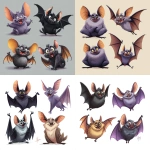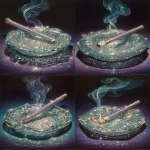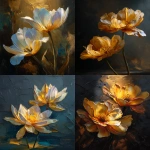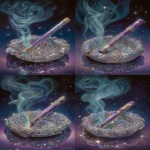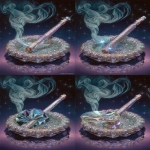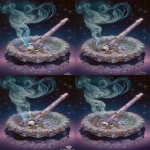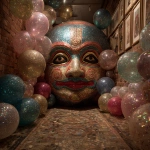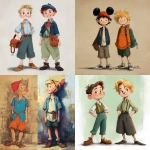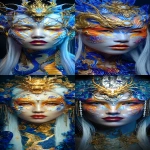Explore the Best AI Image Gallery

Beyond the Brush: AI Images and the Evolving Landscape of Design
The realm of design is undergoing a profound transformation, fueled by the emergence of artificial intelligence (AI) and its ability to generate stunning visuals. AI-powered tools are now capable of creating realistic images, intricate patterns, and captivating artwork, blurring the lines between human creativity and machine intelligence. This has sparked both excitement and apprehension within the creative industry, prompting discussions about the potential benefits and challenges posed by this rapidly evolving technology.
Potential Applications: A Canvas for Innovation
- Marketing and Advertising: AI-generated imagery can streamline content creation for marketing campaigns, enabling designers to produce a wide range of visuals quickly and efficiently. From eye-catching product mockups to personalized advertisements, AI can help brands create impactful visual narratives.
- Graphic Design: AI tools can assist graphic designers in tasks such as logo design, illustration, and layout creation, freeing up their time for more conceptual and strategic work.
- Web and UX Design: AI can generate website mockups, user interface elements, and interactive prototypes, accelerating the design process and allowing designers to experiment with different concepts.
- Fashion and Apparel: AI-powered tools can assist in generating designs for clothing, accessories, and footwear, enabling designers to explore new aesthetics and push creative boundaries.
Ethical Considerations: A Balancing Act Between Creativity and Responsibility
While the potential benefits of AI-generated images are undeniable, its crucial to address the ethical considerations surrounding their use:
- Copyright and Ownership: The question of who owns the copyright to AI-generated images is a complex one that requires careful consideration. Legal frameworks need to evolve to define ownership rights in this new creative landscape.
- Bias and Representation: AI algorithms are trained on vast datasets, which can reflect existing societal biases. This can result in AI-generated images that perpetuate stereotypes or lack diversity. Its essential to develop techniques to mitigate bias and ensure that AI-powered tools promote inclusivity and representation.
- Transparency and Accountability: The decision-making processes of AI algorithms can be opaque, making it difficult to understand how certain images are generated. There is a need for greater transparency in AI systems to build trust and accountability.
Future Trends: The Evolution Continues
The field of AI image generation is constantly evolving, with ongoing research and development pushing the boundaries of whats possible:
- Enhanced Realism and Customization: AI models will continue to become more sophisticated, capable of generating images with even greater realism and detail. Users will have increased control over customization options, allowing them to tailor images to their specific needs.
- Multimodal Generation: AI will be able to generate images from various input modalities, such as text descriptions, audio cues, or even emotions. This will enable a more intuitive and interactive design process.
- Ethical Frameworks and Guidelines: The creative community, policymakers, and researchers will collaborate to establish ethical guidelines and best practices for the responsible use of AI-generated images.
AI image generation is undoubtedly transforming the design industry, offering exciting opportunities for innovation while raising important ethical considerations. As this technology continues to evolve, its essential to embrace its potential responsibly, fostering a creative ecosystem that values both human ingenuity and the transformative power of AI.
](https://images.ai-img.art/thumbnails/150/2fbd98ecfc425cfc1597779121e1c0305437067779e9c471eb64ff9615d5be98.webp)
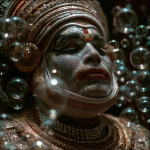


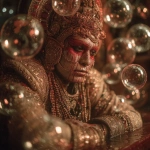
](https://images.ai-img.art/thumbnails/150/3020b8c2b6d9be07e042357107af1de10deb274a41d2b0f332684ad4b532a702.webp)

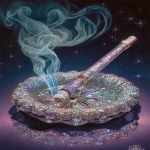




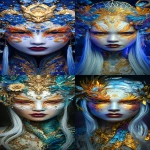


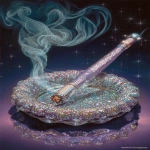

](https://images.ai-img.art/thumbnails/150/269414b0e541026702e9e67c67602c96162f37ff460a388b3b36314c8fc936dd.webp)

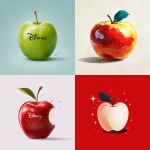
](https://images.ai-img.art/thumbnails/150/5197af8969d850e2a43e141d41e482ccbceedebceb2a4caf9f098f943f9d1b0f.webp)
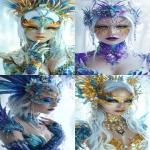






](https://images.ai-img.art/thumbnails/150/485c8b1c747827bdc9a962f8a1919b3c259b18dd263b260208a1eae19fb85e07.webp)


](https://images.ai-img.art/thumbnails/150/8d1fe5a7a49cfc96747182431a853357913286d89258383caab2d3b4681afcb5.webp)
